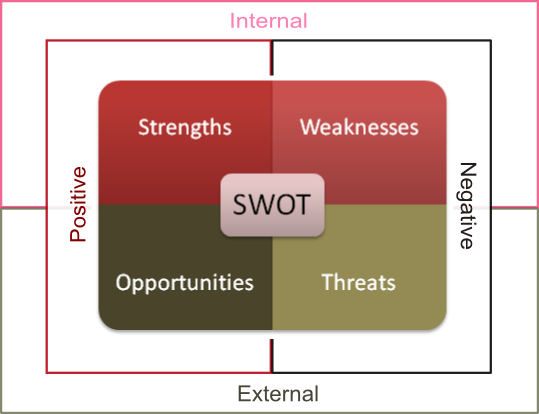 SWOT Analysis is probably the most basic strategic analysis tool. This tool is organized to help weigh a business plan’s positives (Strengths and Opportunities) versus the negatives (Weaknesses and Threats) and also to contrast the internal factors under management’s control (Strengths and Weaknesses) versus external factors (Opportunities and Threats). This positive / negative and internal / external matrix layout provides a great vehicle for insight about the current state of your business and what you can do to position your business for success.
SWOT Analysis is probably the most basic strategic analysis tool. This tool is organized to help weigh a business plan’s positives (Strengths and Opportunities) versus the negatives (Weaknesses and Threats) and also to contrast the internal factors under management’s control (Strengths and Weaknesses) versus external factors (Opportunities and Threats). This positive / negative and internal / external matrix layout provides a great vehicle for insight about the current state of your business and what you can do to position your business for success.
SWOT highlights the core competitive advantages, or Strengths, that a business will emphasize to win in the market and also highlights areas for needed improvement, the Weaknesses. The Strengths and Weaknesses for the business need to compare favorably to competitors that you will meet in the market, or realistic and achievable strategies need to be developed to tip the scale in your favor. The Opportunities section is a great vehicle to identify how the business can grow and to use in the prioritization of activities, new development, marketing, or sales focus. Finally, and perhaps most importantly, the Threats section can provide a litmus test on business prospects and the probability of success. In the end, the positives need to outweigh the negatives. While a SWOT analysis is usually a qualitative assessment, it is critical that the assessment is honest, introspective, and realistic, so using real data and hard market data to back up assertions used in the model is very helpful. Overstatement or understatement of your own or your competitor’s capabilities breaks the model.
